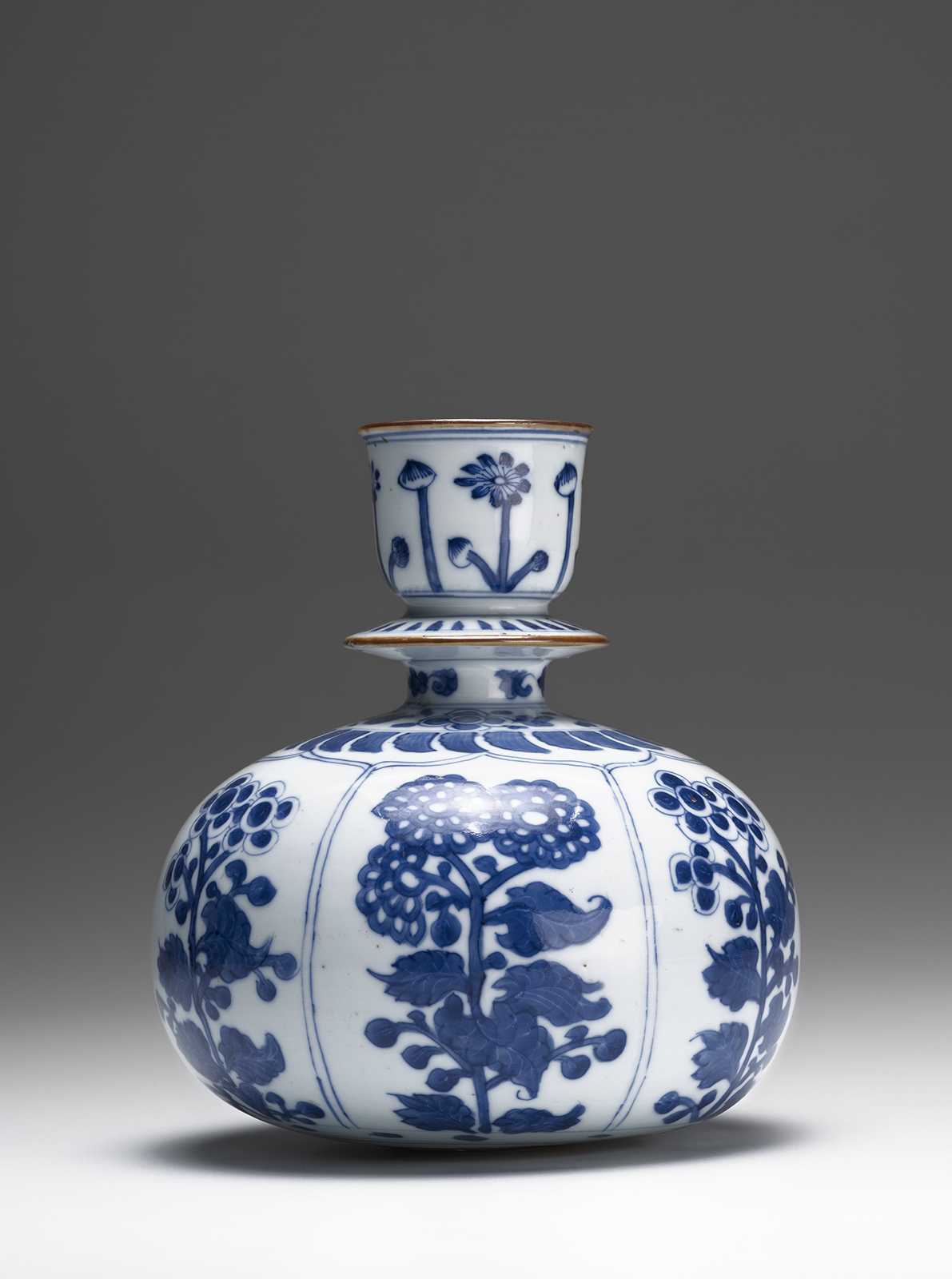Click on the image to zoom
Base of a Water Pipe (Huqqa)
- Accession Number:AKM914
- Place:China
- Dimensions:19 x 17 cm
- Date:1662-1722
- Materials and Technique:porcelain
This water pipe base represents a web of international connections. The tobacco smoked in it is native to the Americas, and was first transported to India by Europeans in the late 1500s. Soon after, the water pipe was developed by an Iranian physician to the emperor Akbar (r. 1556–1605) in an attempt to remove the toxic elements released by tobacco in the smoking process. Indian-style water pipes then came into use in neighbouring regions, and this base was manufactured in China. Its blue glaze was made from cobalt imported into China from Iran.
Note: This online resource is reviewed and updated on an ongoing basis. We are committed to improving this information and will revise and update knowledge about this object as it becomes available.


